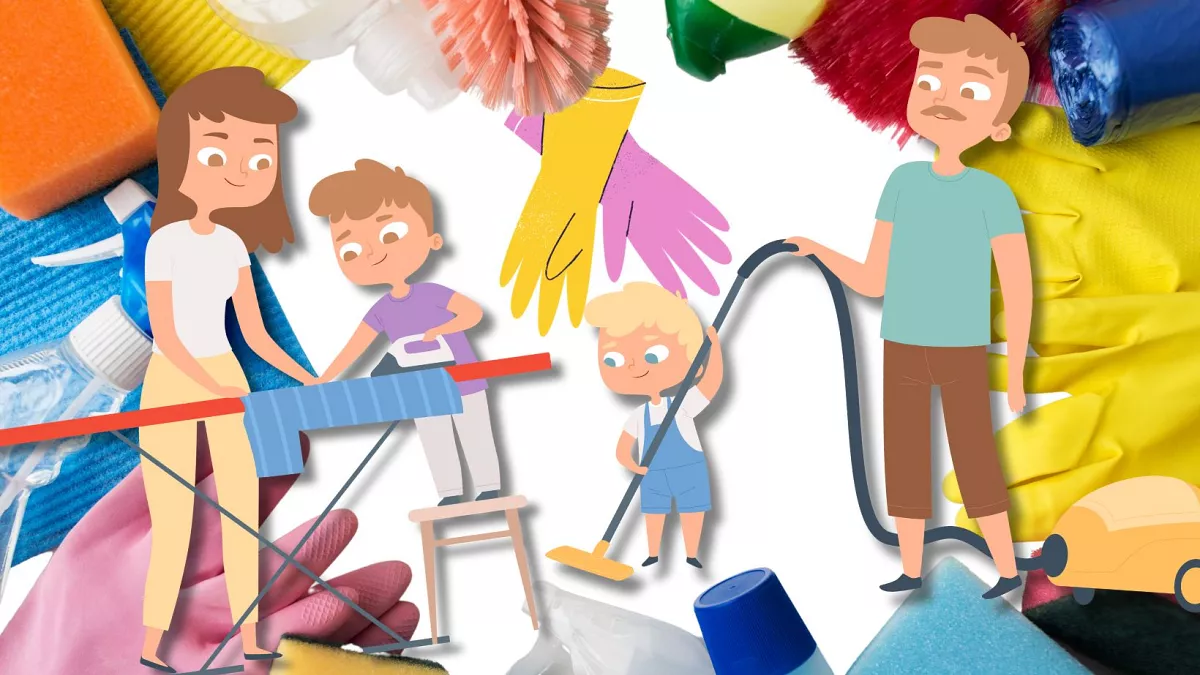The division of tasks and responsibilities within households has been significantly influenced by gender roles for an extended period. Although cultural norms and traditions have influenced the expectations of household responsibilities, these roles are undergoing a rapid transformation worldwide. An understanding of the division of labor in daily life, which encompasses the distribution of duties, caregiving, cooking, and decision-making, provides a window into social change, equality, and family dynamics.
Traditional Gender Roles in the Home
In the past, numerous cultures assigned domestic responsibilities according to gender. Men were typically responsible for income generation, outdoor labor, and maintenance duties, while women were typically responsible for housework, cooking, and child care.
* **The Roles of Women:** Women were frequently perceived as the primary caregivers and homemakers, responsible for daily responsibilities such as meal preparation, housekeeping, laundry, and the care of family members.
* **Roles of Men:** Men were expected to earn the family income, perform maintenance, manage finances, and occasionally handle outdoor tasks such as gardening or home improvement.
In some cases, these roles were reinforced by economic necessity, media portrayals, and social expectations.
Modern Households: Transitions and Transformations
Economic development, education, and evolving social attitudes have all played a significant role in the substantial transformation of gender roles at home in recent decades.
* **Families with Dual Incomes:** As an increasing number of women are employed outside the home, domestic responsibilities are being shared between partners.
* **The Increasing Involvement of Men:** Traditional stereotypes are being challenged by an increasing number of males who are actively engaged in household chores, including cooking, cleaning, and caregiving.
* **Women’s Expanded Roles:** The ongoing challenge for women to reconcile paid work with domestic responsibilities frequently results in discussions regarding burden fairness and the “second shift.” **
* **Modernizing Parenting Standards:** Fathers are currently more actively engaged in the care of their children, including emotional support, school involvement, and feeding and cleansing.
Gender Roles in Domestic Settings: Cultural Distinction
Western countries: In general, there is a trend toward a more egalitarian distribution of domestic responsibilities; however, research indicates that women continue to perform a disproportionate amount of duties. Men are more explicitly encouraged to participate in household chores and caregiving due to their attitudes.
* **ASEAN Countries:** Women continue to assume the primary responsibility for household and family care, as traditional gender roles continue to be more prevalent. Nevertheless, these norms are being altered, particularly among newer generations, as a result of urbanization and education.
* **Urban vs. Rural:** In rural regions worldwide, traditional roles are more likely to endure for an extended period of time as a result of economic factors and cultural continuity, whereas urban settings frequently promote more equitable divisions.
Obstacles and Conversations
* **Work-Life Balance:** Particularly for women, the task of reconciling domestic obligations with paid employment continues to be a challenge.
* **Invisible Labor:** Women are disproportionately affected by emotional labor and the organization of family life, yet this is often overlooked.
* **Expectations of Society:** The pressure to conform to traditional roles can result in tension and restrict personal choices.
* **Policy Support:** The provision of childcare services, flexible work arrangements, and parental leave can facilitate a more equitable distribution of domestic responsibilities.
In the Direction of More Equitable Housing
Communication, negotiation, and cultural adjustments are all necessary to advance toward equitable gender roles in the home.
* **Open Conversations:** Couples can benefit from discussing expectations and dividing tasks based on preferences and abilities.
* **Role Models:** Perceptions are altered through the promotion of shared responsibilities in media and education.
* **Support Systems:** The availability of affordable daycare and family-friendly workplace policies alleviates the burdens.
* **Community Engagement:** Inclusivity is promoted by societal support for diverse family models.
In conclusion,
The roles of gender in daily domestic life are multifaceted and constantly evolving. Increased equality and shared responsibility are becoming the norm in numerous regions of the globe, despite the fact that tradition continues to influence who is responsible for what. Not only do families benefit from acknowledging the value of all domestic duties and promoting equity, but society as a whole does as well. In the end, a harmonious household is established through mutual support, respect, and cooperation, irrespective of who is responsible for clearing the garbage or preparing supper.

Leave a Reply